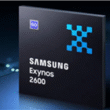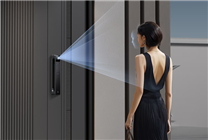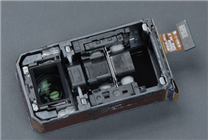Understanding the Evolution of Smart Door Locks: A Market Analysis
Summary:
- The Chinese smart door lock market is projected to grow from 14 million units in 2019 to over 18 million by 2025.
- Smart door locks are categorized into two main types: basic AI models and high-end models with advanced functionalities.
- Consumers should evaluate their needs carefully when choosing between affordability and advanced features in smart door locks.
As the world rapidly embraces technological advancements, the smart door lock market is experiencing significant growth. Recent analyses predict that retail sales in this sector will rise dramatically, from 14 million units in 2019 to a projected 18 million units by the end of 2025. This impressive growth reflects a compound annual growth rate of 4.5%, highlighting the increasing consumer demand for innovative security solutions.
Growing Demand for Smart Door Locks
In the first half of 2025 alone, smart door lock retail sales reached approximately 8.97 million units, reinforcing the trend toward smarter home security. The market’s maturation is accompanied by the division of smart door locks into two distinct categories, which varies significantly in both functionality and pricing. Understanding these categories is vital for consumers looking to enhance their home security.
Two Distinct Categories of AI Smart Door Locks
Basic AI Smart Door Locks
The first type is the basic AI smart door lock. These locks are designed with core functionalities reliant on AI algorithms that optimize biometric performance. Additional features often include:
- Voice Assistants: Offering seamless interaction for users.
- Smart Reminders: Helping users manage access more efficiently.
- Smart Cat Eyes: Enhancing monitoring capabilities.
These products showcase mature technology at an attractive price point, averaging around 950 yuan. The affordable pricing and solid performance have made them a favorite among everyday consumers, evidenced by their online penetration rate exceeding 40% in the first three quarters of 2025.
High-End Smart Door Locks with Advanced Features
In contrast, high-end smart door locks equipped with AI large models offer cutting-edge features that go beyond the basics. Key attributes include:
- Active Dialogue Capabilities: Engaging users in multiple rounds of interaction.
- Intelligent Event Tracing: Providing logs and alerts on door activities.
- Semantic Understanding: Recognizing and responding to user language in a nuanced way.
Brands like Deschman, EZVIZ, and TCL are pushing the envelope with these advanced functionalities, targeting consumers craving a richer user experience. However, these premium products command an average price of 3,165 yuan and currently hold less than 0.5% of the online market share.
Making the Right Choice for Consumers
Given the significant differences between the two categories, consumers should consider their specific needs when making a purchase. For those who prioritize cost-effectiveness without sacrificing essential security features, basic AI smart door locks are an excellent choice. Conversely, individuals with a bigger budget and a desire for enhanced intelligent interaction may find the advanced models worth the investment.
Future Trends in Smart Door Lock Technologies
As AI technology continues to advance and manufacturing costs decline, it’s anticipated that the functionalities of high-end models will eventually become more accessible to a broader consumer base. This shift could promote further market growth and innovation, making sophisticated security solutions available to a larger audience.
In summary, the smart door lock market is poised for significant evolution as it adapts to consumer preferences and technological advancements. By understanding the distinctions between basic and high-end smart locks, consumers can make informed choices that enhance their home security while also reflecting their personal needs and budget constraints.







